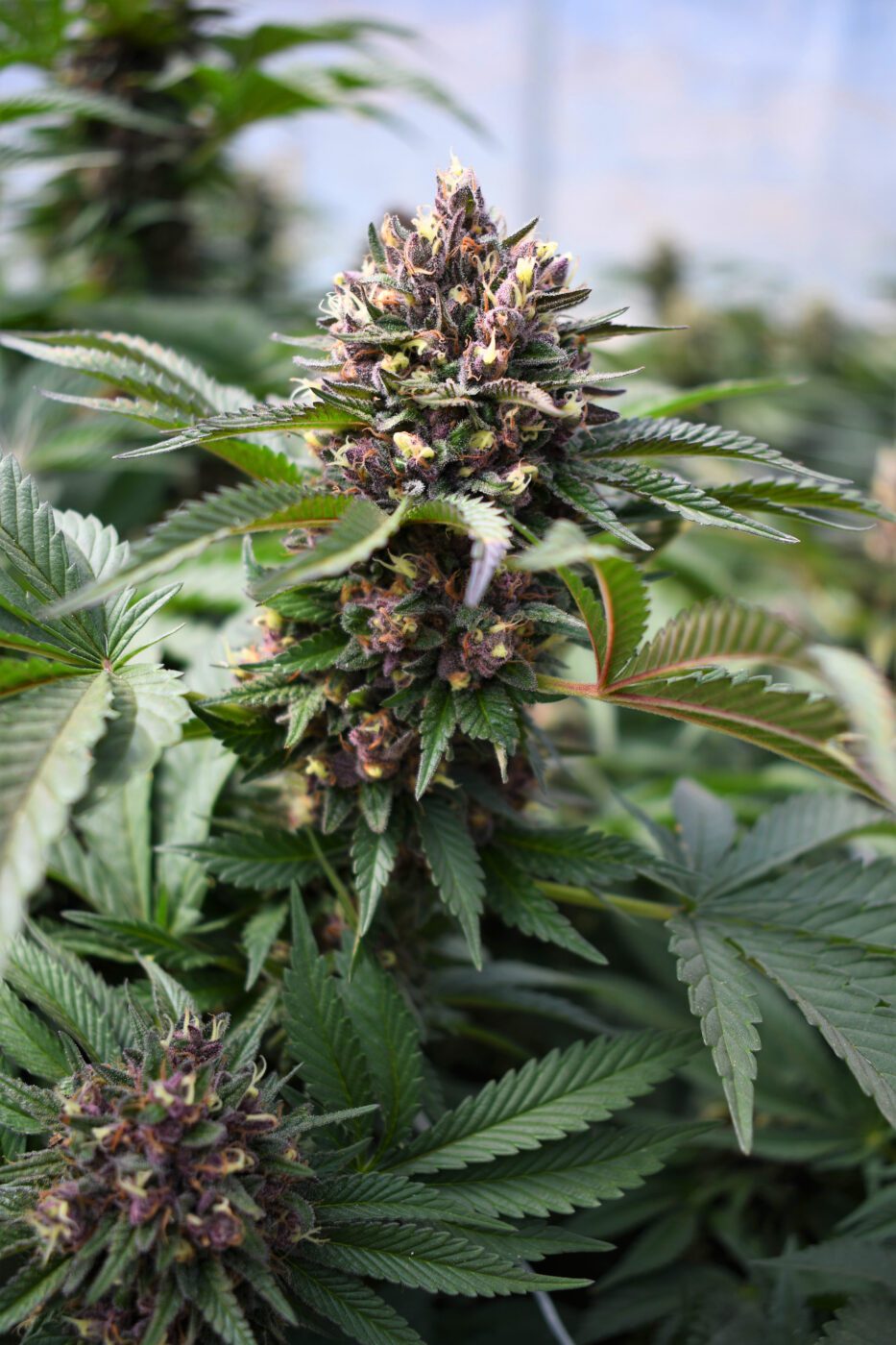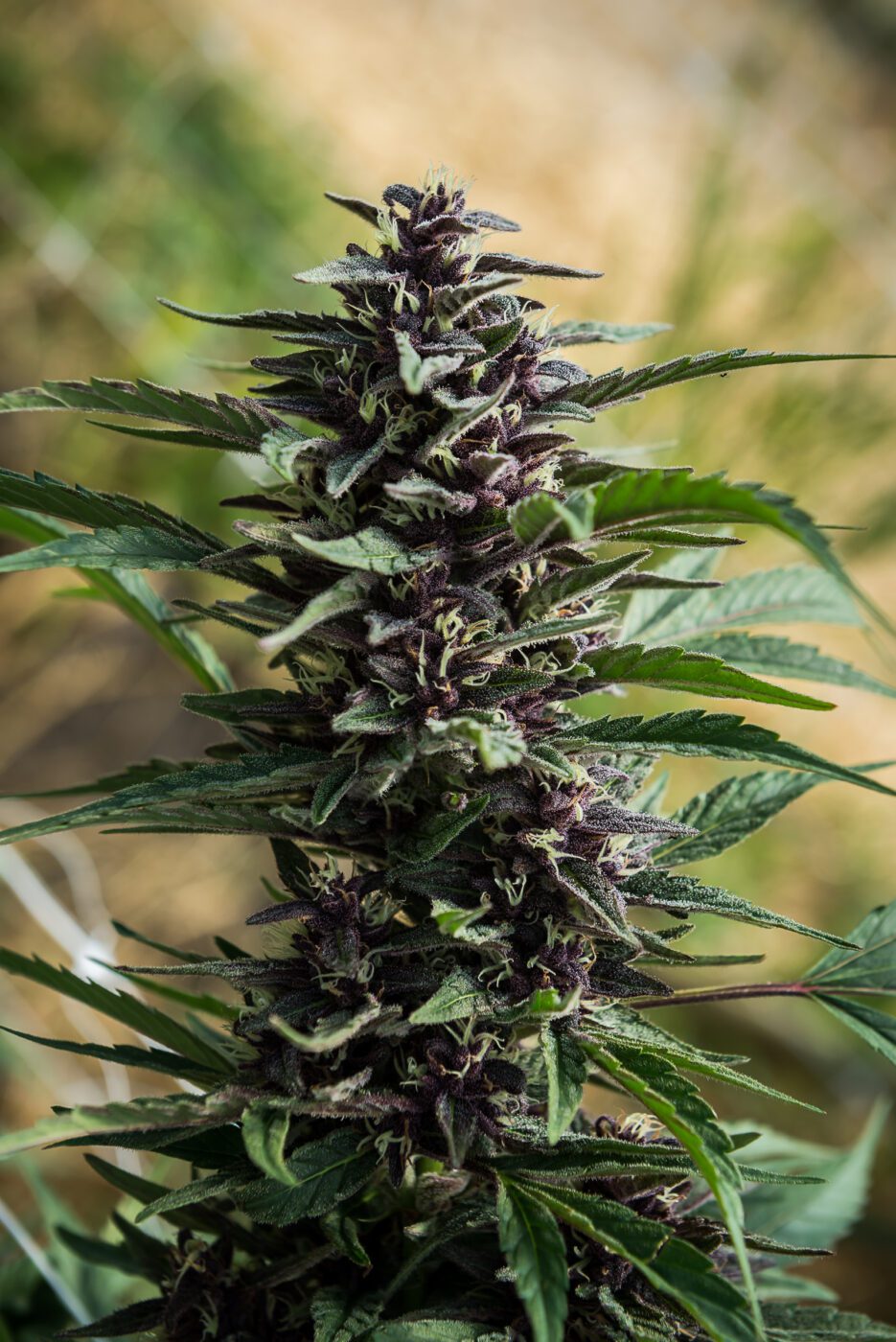Photos courtesy of Dark Heart Nursery
Dan Grace, founder and CEO of Dark Heart Industries and Dark Heart Nursery, established the company in 2007 to provide healthy, stable cannabis clones to the marketplace. Today, it’s grown to be one of the largest cannabis genetics companies in California, serving commercial cannabis growers.
On January 31, Dark Heart announced the world’s first seedless triploid cannabis for commercial growers. This development, a part of Dark Heart’s trademarked PistilGuard technology, offers a revolutionary advantage in cannabis genetics and cloning, ensuring that these plants essentially cannot produce seeds even when exposed to pollen from male plants in the same field, greenhouse, or neighboring field.
As Grace explains, the production of seeds in cannabis means less cannabinoids and terpenes, less THC, less yield, and scraggly looking bud in the bag.
Growers have long sought to remove seeds from their cannabis or control the pollination so the plants don’t produce seeds. Sinsemilla, which means “without seeds” in Spanish, has been around since the ’70s. Feminized cannabis seeds produce overwhelmingly female plants. However, even plants grown from feminized seed can still be pollinated by nearby male plants. Cannabis plants that can’t produce seeds effectively solves this problem.
The introduction of triploid, seedless varieties represents a significant advancement not only in cannabis but also in other commercial crops like watermelons, bananas, and apples. This trait enables higher yields, reduced costs, and enhanced aromatic and chemical qualities of the crop, leading to greater profitability and control for commercial cannabis growers. Ultimately, this technology promises scalability in cannabis cultivation comparable to crops like corn, wheat, or industrial hemp.

Solving the pollination problem for commercial cannabis growers
Grace says the number one complaint he hears from cannabis growers of all types, especially commercial cannabis growers, is the spontaneous creation of male and female flowers on the same plant, known as hermaphroditism. “This is a big problem for growers, so we were really thinking about how to address hermaphroditism,” says Grace. “And it turns out that it’s a very complex problem that has to do with the plant’s genetic underpinnings, specifically cannabis genetics, and how they relate to complex interrelated genetic and environment issues.”
Grace and his science team, headed by Dr. Jeremy Warren, honed in on the fact that hermaphroditism itself isn’t really the issue. The real problem is the damage caused by having pollen-producing hermaphrodites within a crop – and that is crop pollination and development of seeds in females.
“With the understanding that it would be a while to fully figure out hermaphroditism, we set out to provide an interim solution to crop pollination and at least solve the symptoms of hermaphroditism,” Grace explains. “And that’s when we started exploring methods to create seedless or sterile varieties through cannabis cloning.”
It took a year and a half of focused work that was based on seven years of prior work to reach this point in the development of PistilGuard technology. Other related work has to do with tissue culturing and plant disease identification and eradication.
“We think it’s going to dramatically improve yields for farmers, especially by mitigating the risk of or the instances of pollination events from neighboring crops and rogue males,” says Grace. “A side effect is that by being more confident in their crop not becoming pollinated in this way, we expect the cost of production will be significantly lower for farmers as well.”
You don’t have to have a field the size of a hay field to get something out of this. Smaller-scale growers can benefit too. Grace says the product will optimize yield and results for the home growers as well. “This is another way where improvements can make that home growing experience much easier and more satisfying and rewarding as a result,” he says.

The Science
Obviously, there is potential for concern among commercial cannabis growers. Could this type of development in cannabis genetics be encouraging monoculture, a Monsanto-like control of seed genetics? Grace says these concerns amount to misunderstandings. “This technology is totally natural,” assures Grace. “It has to do with chromosomes. Humans have two sets of chromosomes, one from each parent, and plants by and large are the same way. They usually have one set of chromosomes from each parent. But unlike humans, plants, including those used in cannabis cloning, can actually tolerate having different amounts of sets of chromosomes.”
This means a plant could have two, three, or even four sets of chromosomes, which would mean two sets from each parent. They could have eight sets of parent chromosomes, or four from each parent. This is called polyploidy, and it can happen spontaneously through cell division. Cells also may not divide at all. Some salamanders, frogs, and leeches are polyploids, and being triploid is common in the plant world, for instance, the common banana and the seedless watermelon are triploids with two sets of chromosomes from one parent and one from the other. Imagine this scenario . . . a tetraploid plant parent, which has four sets of chromosomes, and a diploid parent, with two sets. The tetraploid parent divides and ends up with two sets of chromosomes to pass on to the child (the new plant). The diploid parent splits and provides one set to the child. That creates a triploid plant.
“Because that plant has three sets of chromosomes, it can’t evenly divide anymore,” says Grace. “The separation basically ends up with a damaged set of DNA. As a result, it can’t successfully recombine, which is what makes them sterile. The same thing happens with mules, which are the offspring of a male donkey and female horse, that can’t reproduce. It’s a totally natural phenomenon. We’ve just been able to harness this as breeders and shape it to our benefit.”
History of Dark Heart
Grace, now 39, grew up in California’s Bay Area. He dropped out of school in 2003 during the leadup to the Iraq War. At the time, he was active in anti-war and social justice work. He ended up traveling around the country and returned to California in 2007, still participating in activist circles but also with a passion for horticulture.
“Horticulture was a hobby that I could fit into my activism,” says Grace. “When I returned to the Bay Area in 2007, cannabis was starting to be sort of normalized. 15 years now is a long time in this industry, and certainly it is much different now than when I got into it.”
Medical cannabis has been legal in California since 1996, so Grace re-entered a community where doctors were issuing cards, the first dispensaries had opened up, and cannabis genetics and use were becoming more transparent.
“We saw this as still definitely like an exciting, bleeding-edge industry, an area that was still very much a movement where we could make a social change that we cared about,” explains Grace, who was 24 at the time. “We started in the industry as cultivators, as most do, with a little home grow in east Oakland. We scraped together a little bit of money that we had from odd jobs and set up a grow. I tell people all the time that without naivete, the ignorance of youth, it’s hard to imagine anything would change in this world.”
Grace “did the math” and in his confidence, figured he’d be selling for $4,000 or so a pound at the time. “You do the math and think you’ll make a bunch of money and what could go wrong?” he says with a laugh. “But as we got into it, of course, we were blown away by how much more challenging it was than we thought it would be. We made every mistake in the book and had problem after problem and we barely got out of that first grow house with the shirts on our backs.”
After that experience, Grace and his colleagues asked themselves the crucial questions they knew they would have to answer in order to stay in the business: Do we want to keep going in the industry? And if so, how do we want to show up? What do we want to do? What do we want to do differently?
In the early days of growing, unless you were lucky enough to have a mentor, most people had to figure out problems on their own. You’re up at 3 in the morning trying to figure out how your electrical works because you can’t call an electrician. Your plants are sick and you don’t have anyone to talk to who can help you figure out what’s wrong with them. There were no consulting services. Cannabis cloning farmers are affected by things that are out of their control including weather, crop viability, the cost of fixing or replacing equipment, and changes or inconsistencies in commodity pricing.
“Growers really were out there on their own in a very challenging environment,” says Grace.
Field Trials
This year, Dark Heart is launching commercial field trials with a select group of commercial cannabis growers as part of their customer base, testing in real-world settings across various regions in California. The data collected will be used to enhance their broader commercial launch in spring 2023.
The PistilGuard technology represents another stride forward for the company in advancing the cannabis industry. As a producer primarily of live clonal cuttings of plants, Dark Heart has learned over the years that cannabis cloning is costly, time-consuming, resource-intensive, difficult to scale, and highly prone to disease. Growing cannabis plants from seeds—which incorporates new cannabis genetics—solves or minimizes many of these issues. Grace’s long-term goal is to continue elevating the quality of seeds within the cannabis industry so that cannabis farmers can commercially rely on these as their main source of new genetics.
And here’s the answer to the most curious question of all: Why choose the name Dark Heart? The name is a play on the last name of Grace’s partner who he founded the company with. “When we were founding the company we had all sorts of monikers for her like Princess Dark Heart and stuff like that,” recalls Grace. “Cannabis was black market back in those days. There was very much a secret kind of underground kind of vibe, and we thought Dark Heart would be a cool cannabis name.”
Grace goes on to say that many people don’t realize that at the time there were no real cannabis brands, specifically because growers didn’t want their names on anything because they didn’t want to be found. “We felt it was really important to take that risk to do so because we wanted farmers to use our products and have a great experience with our products and be able to know that when it came time for them to start their garden again that they could use our product again and expect to have a similar, successful result, so we put a brand on it for that reason.”

